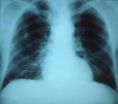Biofuels derived from algae and cyanobacteria are possible alternatives to petroleum-based fuels and could help the U.S. meet its energy security needs and reduce greenhouse gas emissions, such as carbon dioxide (CO2). Algal biofuels offer potential advantages over biofuels made from land plants, including algae's ability to grow on non-croplands in cultivation ponds of freshwater, salt water, or wastewater. The number of companies developing algal biofuels has been increasing, and several oil companies are investing in them. Given these and other interests, the National Research Council was asked to identify sustainability issues associated with large-scale development of algal biofuels.
The committee that wrote the report said that concerns related to large-scale algal biofuel development differ depending on the pathways used to produce the fuels. Producing fuels from algae could be done in many ways, including cultivating freshwater or saltwater algae, growing algae in closed photobioreactors or open-pond systems, processing the oils produced by microalgae, or refining all parts of macroalgae. The committee's sustainability analysis focused on pathways that to date have received active attention. Most of the current development involves growing selected strains of algae in open ponds or closed photobioreactors using various water sources, collecting and extracting the oil from algae or collecting fuel precursors secreted by algae, and then processing the oil into fuel.
The committee pointed out several high-level concerns for large-scale development of algal biofuel, including the relatively large quantity of water required for algae cultivation; magnitude of nutrients, such as nitrogen, phosphorus, and CO2, needed for cultivation; amount of land area necessary to contain the ponds that grow the algae; and uncertainties in greenhouse gas emissions over the production life cycle. Moreover, the algal biofuel energy return on investment would have to be high, meaning more energy would have to be produced from the biofuels than what is required to cultivate algae and convert them to fuels.
The committee found that to produce the amount of algal biofuel equivalent to 1 liter of gasoline, between 3.15 liters to 3,650 liters of freshwater is required, depending on the production pathway. Replenishing water lost from evaporation in growing systems is a key driver for use of freshwater in production, the committee said. In addition, water use could be a serious concern in an algal biofuel production system that uses freshwater without recycling the "harvest" water.
To produce 39 billion liters of algal biofuels, 6 million to 15 million metric tons of nitrogen and 1 million to 2 million metric tons of phosphorus would be needed each year if the nutrients are not recycled, the report says. These requirements represent 44 percent to 107 percent of the total nitrogen use and 20 percent to 51 percent of the total phosphorus use in the U.S. However, recycling nutrients or utilizing wastewater from agricultural or municipal sources could reduce nutrient and energy use, the committee said.
Another resource that could limit the amount of algal biofuels produced is land area and the number of suitable and available sites for algae to grow. Appropriate topography, climate, proximity to water supplies -- whether freshwater, inland saline water, marine water, or wastewater -- and proximity to nutrient supplies would have to be matched carefully to ensure successful and sustainable fuel production and avoid costs and energy consumption for transporting those resources to cultivation facilities. If the suitable sites for growing algae are near urban or suburban centers or coastal recreation areas, the price of those lands could be prohibitive. A national assessment of land requirements for algae cultivation that takes into account various concerns is needed to inform the potential amount of algal biofuels that could be produced economically in the U.S.
One of the primary motivations for using alternative fuels for transportation is reducing greenhouse gas emissions. However, estimates of greenhouse gas emissions over the life cycle of algal biofuel production span a wide range; some studies suggest that algal biofuel production generates less greenhouse gas emissions than petroleum-based fuels while other studies suggest the opposite. These emissions depend on many factors in the production process, including the amount of energy needed to dewater and harvest algae and the electricity sources used.
The committee emphasized that the crucial aspects to sustainable development are positioning algal growth ponds close to water and nutrient resources and recycling essential resources. With proper management and good engineering designs, other environmental effects could be avoided, the committee said. Examples include releasing harvest water in other bodies of water and creating algal blooms and allowing harvest water to seep into ground water.
For algal biofuels to contribute a significant amount of fuels for transportation in the future, the committee said, research and development would be needed to improve algal strains, test additional strains for desired characteristics, advance the materials and methods for growing and processing algae into fuels, and reduce the energy requirements for multiple stages of production. To aid the U.S. Department of Energy in its decision-making process regarding sustainable algal biofuel development, the committee proposed a framework that includes an assessment of sustainability throughout the supply chain, a cumulative impact analysis of resource use or environmental effects, and cost-benefit analyses.
###The report was sponsored by the U.S. Department of Energy. The National Academy of Sciences, National Academy of Engineering, Institute of Medicine, and National Research Council make up the National Academies. They are private and independent nonprofit institutions that provide science, technology, and health policy advice under an 1863 congressional charter. Panel members, who serve pro bono as volunteers, are chosen by the Academies for each study based on their expertise and experience and must satisfy the Academies' conflict-of-interest standards. The resulting consensus reports undergo external peer review before completion. For more information, visit http://national-academies.org/studycommitteprocess.pdf. A committee roster follows.
Contacts: Jennifer Walsh, Media Relations Officer Luwam Yeibio, Media Relations Assistant
Office of News and Public Information
202-334-2138; e-mail news@nas.edu Pre-publication copies of Sustainable Development of Algal Biofuels in the United States are available from the National Academies Press; tel. 202-334-3313 or 1-800-624-6242 or on the Internet at http://www.nap.edu. Reporters may obtain a copy from the Office of News and Public Information (contacts listed above).
NATIONAL RESEARCH COUNCIL Division on Earth and Life Studies Board on Agriculture and Natural Resources
and
Division on Engineering and Physical Sciences
Board on Energy and Environmental Systems
Committee on Sustainable Development of Algal Biofuels
Jennie Hunter-Cevera (chair)
Independent Consultant
Hunter and Associates
Ellicott City, Md.
Sammy Boussiba
Head
Landau Family Microalgal Biotechnology Laboratory
The Jacob Blaustein Institutes for Desert Research
Ben Gurion University
Beersheva, Israel
Joel L. Cuello
Professor
Department of Agricultural and Biosystems Engineering
University of Arizona
Tucson
Clifford Duke
Director of Science Programs
Ecological Society of America
Washington, D.C.
Rebecca A. Efroymson
Senior Scientist
Environmental Sciences Division
Oak Ridge National Laboratory
Oak Ridge, Tenn.
Susan S. Golden1
Distinguished Professor
Division of Biological Sciences
University of California, San Diego
La Jolla
Jennifer Holmgren
CEO
LanzaTech
Roselle, Ill.
Donald L. Johnson2
Vice President of Product and Process Technology
Grain Processing Corp. (retired)
Muscatine, Iowa.
Mark E. Jones
Executive External Strategy and Communications Fellow
Dow Chemical Co.
Midland, Mich.
Val H. Smith
Professor
Department of Ecology and Evolutionary Biology
University of Kansas
Lawrence
Cai Steger
Energy Policy Analyst
Natural Resources Defense Council
New York City
Gregory Stephanopoulos2
Willard Henry Dow Professor of Biotechnology and Chemical Engineering
Massachusetts Institute of Technology
Cambridge
Larry P. Walker
Professor
Department of Biological and Environmental Engineering
Cornell University
Ithaca, N.Y.
Eric Williams
Associate Professor
Rochester Institute of Technology
Rochester, N.Y.
Paul V. Zimba
Professor
Center for Coastal Studies
Texas A&M University
Corpus Christi
RESEARCH COUNCIL STAFF
K. John Holmes
Study Co-director
Evonne P.Y. Tang
Study Co-director
1 Member, National Academy of Sciences
2 Member, National Academy of Engineering



